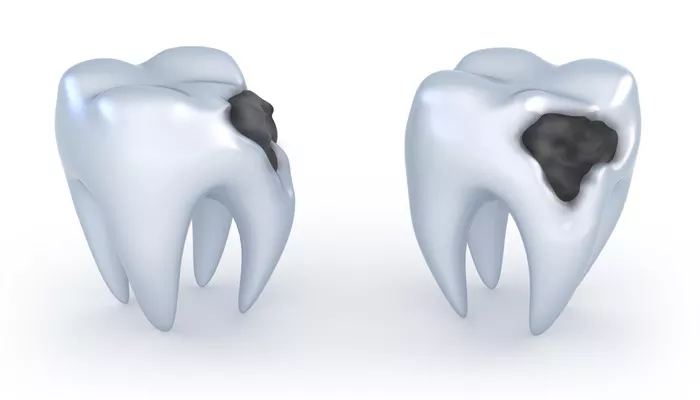Tooth decay is a common dental issue that affects individuals of all ages. Understanding how long it takes for tooth decay to heal is essential for effective prevention and treatment. This article will explore the stages of tooth decay, the healing process, and what you can do to promote recovery.
What Is Tooth Decay?
Tooth decay, also known as dental caries or cavities, occurs when the enamel on your teeth is damaged by acids produced by bacteria in dental plaque. This process can lead to the formation of cavities, which are small holes in the teeth. The progression of tooth decay typically occurs in several stages:
Initial Demineralization: The earliest stage where minerals are lost from the enamel, often reversible with proper care.
Enamel Decay: As decay progresses, the enamel begins to break down, leading to visible white or brown spots.
Dentin Decay: Once the decay reaches the dentin (the layer beneath enamel), it can spread more rapidly and cause sensitivity.
Pulp Decay: If untreated, decay can reach the pulp, leading to pain and infection.
Abscess Formation: The most severe stage where infection may lead to an abscess, requiring immediate dental intervention.
Healing Time for Tooth Decay
The healing time for tooth decay varies significantly depending on the stage at which it is detected and treated. Here’s a detailed breakdown:
1. Initial Demineralization (Reversible Stage)
Healing Time: A few weeks to several months.
Treatment: Fluoride treatments can help remineralize enamel during this stage. Regular use of fluoride toothpaste and mouth rinses can enhance recovery.
2. Enamel Decay
Healing Time: Generally requires professional intervention; healing may take several weeks post-treatment.
Treatment: At this stage, a dentist may recommend fillings if the damage is significant. Early intervention can prevent further deterioration.
3. Dentin Decay
Healing Time: Weeks to months after treatment.
Treatment: Once decay reaches dentin, fillings are necessary to restore function and prevent pain. The healing process involves removing decayed material and filling the cavity with appropriate materials (composite resin or amalgam).
4. Pulp Decay
Healing Time: Several weeks post-root canal treatment.
Treatment: Root canal therapy is often required if the pulp becomes infected. After cleaning out the infected pulp, a filling is placed inside the tooth.
5. Abscess Formation
Healing Time: Several weeks; may require additional treatments.
Treatment: An abscess usually requires antibiotics and possibly surgical drainage. After addressing the infection, further restorative procedures may be needed.
Factors Influencing Healing Time
Several factors can influence how long it takes for tooth decay to heal:
Stage of Decay: The earlier the intervention, the quicker and easier it is to heal.
Overall Oral Hygiene: Consistent brushing, flossing, and regular dental visits promote faster healing.
Dietary Choices: A diet low in sugar and rich in nutrients can support dental health and recovery.
Individual Health Conditions: Certain health issues (e.g., diabetes) can affect healing times.
Prevention Strategies
Preventing tooth decay is crucial for maintaining oral health and minimizing treatment time. Here are effective strategies:
Maintain Good Oral Hygiene
Brush twice daily with fluoride toothpaste.
Floss daily to remove plaque between teeth.
Regular Dental Check-ups
Visit your dentist every six months for cleanings and examinations.
Healthy Diet
Limit sugary snacks and beverages that contribute to plaque formation.
Consume calcium-rich foods (e.g., dairy products) for stronger teeth.
Fluoride Use
Use fluoride mouthwash or treatments as recommended by your dentist.
Avoid Tobacco Products
Smoking or using tobacco increases the risk of gum disease and cavities.
Consider Sealants
Dental sealants can provide an additional layer of protection against cavities, especially in children.
Conclusion
Understanding how long it takes for tooth decay to heal is vital for effective management and prevention strategies. Early detection through regular dental visits allows for timely interventions that can significantly shorten healing times. By maintaining good oral hygiene practices and making informed dietary choices, individuals can protect their teeth from decay and promote overall oral health.
In summary:
Initial demineralization may heal within weeks with fluoride treatments.
Enamel decay typically requires fillings; healing may take several weeks post-treatment.
Dentin decay necessitates fillings with a healing time ranging from weeks to months.
Pulp decay often requires root canal treatment; recovery may take several weeks.
Abscesses require immediate attention; healing times vary based on treatment effectiveness.
By prioritizing oral health through preventive measures and seeking prompt treatment when necessary, individuals can effectively manage tooth decay and maintain a healthy smile throughout their lives.
Related topics:

